Local News
Gray Academy has gone eight months with not one single case of COVID
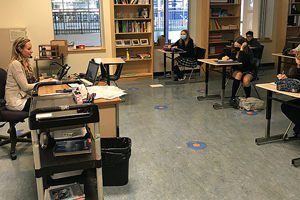
over 675 cases in other Manitoba schools
By BERNIE BELLAN
While Manitobans can rightfully be said to be in a state of shock over how this province has gone from having one of the best records anywhere at keeping COVID at bay to now having one of the worst in Canada, the focus has very much been on the tragic situations in many personal care homes.
Yet, the situation in schools for the most part is one where there has also been a steady number of COVID cases either having been reported or suspected. Since all available evidence to this point, however, is that COVID simply does not affect young people to the same degree that it does the elderly (among whom I can rightfully count myself), I think it’s fair to say that not much attention has been paid to what’s been happening in schools in this province.
According to the CBC Manitoba website, however, “Manitoba had recorded 675 cases of COVID-19 in schools as of Nov. 17. A total of 513 of those were students and 162 were staff members.
The CBC website goes on to note that “The province has posted dozens of possible exposures at schools across Manitoba on its website – including more than 150 exposures at schools in the Winnipeg health region since Sept. 25.”
Since ours is a newspaper serving the Jewish community I thought it appropriate to take a look at what’s been happening in the only fully JK-12 Jewish day school in the province: Gray Academy.
Luckily, it is fair to report in the case of that school that “no news is good news.”
Since the first lockdown began on March 14 I’ve had occasion to speak with Gray Academy Head of School and CEO Lori Binder twice before: In our May 27 issue, when we took a detailed look at how Gray Academy had made the successful transition to teaching online through what it called its “Gray Away” online program; and in our Sept. 2 issue, when we took a look at plans that were put in place to welcome back students under the highly restrictive protocols that the province had established for all schools in Manitoba.
Now, with almost three full months having gone by since the start of the new school year, I thought it appropriate to speak with Lori again to get her assessment of how things have gone at Gray Academy thus far. Joining in the phone conversation was Andrea Ritter, Director, Marketing and Communications.
No cases of COVID at Gray Academy thus far
I began by asking whether “there have been any incidents of COVID at the school?”
Lori answered: “Thank G-d no, there have not. We’ve been healthy every day.”
I asked: “Are any of your students now taking their schooling online?”
Lori: “Let me give you a general overview. We are fully open. We are able to have our students with two meters distance all the way up to Grade 12. We made that change when schools moved to orange and that was already in place in the elementary. We were able to spread out more, so that for example, our Mac lab that was used for the film class, we’re now using it for other classes and we’ve moved a grade to another corner of the school.
“We are open five days a week for every one of our students unless they fail our health screening.”
Lori went on to explain that if, for any reason, a student is unable to attend classes in person beginning with Grade 5, they are able to “access classes online. They are able to login to ‘Google classroom’ and they are able to participate.” As well, students are beginning to learn to use Google Classroom independently in Grades 3 & 4.
But, she noted, “we don’t have a remote choice option – meaning a student is just choosing to be remote – but if they’re not in the building and they’re still well enough to learn, they can access the classroom from home.”
In terms of how many students have actually been absent from school on any given day, Lori said that the average attendance has been “approximately 90% on a daily basis.”
Enrolment has remained up
I asked how enrolment this year compares with last year?
“Last year it was 494,” Lori answered. “This year it’s 484.”
She noted, however, that the school’s “retention percentage” (meaning “how many students didn’t graduate and were eligible to return”) is at “93%”.
Lori added that, “We only had two families that, before school started, chose to home school.”
In terms of how many new students are at Gray Academy this year, Lori said there are 60 new students (who could be in grades as early as Junior Kindergarten). While there were 80 new students in the 2019-20 academic year, the lower figure, Lori explained, is largely explained by the fact that, “of those 60 new students we’re seeing more local as we’ve seen fewer families arrive from outside of Canada.”
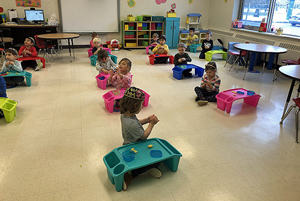
Andrea Ritter noted that “this has been an unusual year when we’ve had to turn people away when we filled our rooms. We had to maintain that distancing between students in rooms – which meant we had to limit our capacity in certain classrooms. We had to cut off our registration for JK and K for sure.”
Lori gave as an example an inquiry the school had from someone wanting to enroll their child in Grade 4. “We had no more room,” she explained, “ so we had to tell them their child was on a wait list.”
I asked whether there was a breakdown of class size by grade. Lori said they had figures for high school and elementary. “Last year our high school (Grades 7-12) was 211 and this year it’s 218. Our elementary (JK-Grade 6), last year was 283; this year it went down a little to 266.”
All staff returned this year – and have remained
At that point in the conversation I said I wanted to turn attention to the staff of the school. I asked whether everyone had returned?
Lori answered: “Our staff is all here. No one chose not to continue working because of COVID and we’ve welcomed some new staff. They’ve been amazing. Our staff are so committed to who we are as a school community, committed to being able to provide our students purpose, a place to be, and a community where they’re known and cared for by the teachers.
“If you were to say to us, before we knew what COVID was, that we’re going to run a school, and we’re going to keep changing, and as a teacher you’re going to have to start moving around from class to class – and you’re going to have some kids in one classroom and some in another, and you’re going to always be on the alert for changes from the province – our staff have been really incredible.
“From my educational lens, what I see is that our kids really want to be in school; they want to be somewhere. They don’t want to be in isolation. We’re all social beings, teenagers especially – they crave being with others, being in community.
“We’re doing things we’ve never done before. Bernie, if you ever want to come and watch our pick-up and drop-off – it’s a science we’ve created. We’ve got this orderly fashion how kids get out of their cars so we can limit gatherings and have kids go through doorways one at a time. We’re just so grateful for the positivity of our staff and the partnership with our families.”
Could Gray Academy remain open if other schools are forced to shut their doors?
I wondered though about something that doesn’t get discussed much within general conversation. The province has been releasing data about which geographic areas have been hardest hit by COVID (also which schools) and it has been quite evident that the pandemic has taken a disproportionate toll on socioeconomic groups that are more disadvantaged. Now, with talk of a possible even more drastic shutdown that would encompass schools this time – but with Gray Academy, among other schools, having fared quite well in terms of avoiding any incidents of COVID, I asked whether the possibility that some schools might be allowed to remain open while others would have to close had ever been brought up in discussions with representatives from the Department of Education?
Lori responded that “What I can share, and has not changed ever since the summer, is they’ve always spoken about what would make schools move into the red pandemic response level. We know that one reason is transmission in a school that is specific to that school. We saw that happen with one of the first schools in the River East School Division (John Pritchard) where a cohort was moved out – and that was specific to that school.
“That same basic message is what we’re still hearing: ‘There would be a change to a school if there’s evidence of transmission within a school….We have to be prepared for anything that might happen., but my belief is there won’t be a decision made based on anything other than what’s happening in specific schools.”
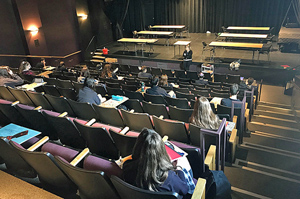
Some classrooms have been able to accommodate fairly large numbers of students
I wondered what the maximum class size is now that each student is required to maintain a distance of 2 metres all around?
“In elementary, believe it or not,” Lori responded, “we’ve taken out furniture; we’ve removed bookshelves that were screwed to the walls for decades – in order to make more room – it would be around 18 or 19; and in high school, we’ve been using some of the larger spaces for classrooms – like the Mac lab – where we can get around 20 or 21 students. Right now, because we’ve always had the availability of the Berney Theatre, there is a group in the foyer and a group utilizing the theatre so that we can really give kids the space.”
“That would mean you’re having university style lectures in the theatre itself,” I suggested.
Further, because there are windows in the foyer the school is able to open the blinds and get some natural light into that space, Lori explained.
Andrea added that students who are taking classes in the theatre have become quite resourceful in adapting to the theatre format. “It’s energized the kids. As soon as they went to the Berney (Theatre) they all started coming up with ideas, like ‘How can I create a lap desk for myself?’ because it’s hard to hold your Chromebook on your lap while you’re taking notes.”
Lori also noted that, until the province ordered the entire city into code red, Shmoozers had been providing hot lunches for kids – brought to them in their rooms. “We’re trying to keep our hot lunch program going – at least for this month,” she noted, “with food from other kosher catering. We don’t have volunteers coming in right now, so we (the staff) are doing that.”
Talking about the staff and lunches, I asked whether staff are still eating their lunches in the Kaufman-Silverberg Library?
“Our high school staff are,” Lori said, “but we still have our staff room. It’s just limited by how many people can be in there at once. There’s enough space for 12. There are other places for staff to go.”
Morale has remained high – and students have shown amazing resillience
I asked whether there are any assessments of morale that are taken on any sort of systematic basis or is it all based on anecdotal evidence? After all, I suggested to Lori, “you’re giving me what would be considered a pretty upbeat report.”
Andrea Ritter said she’d like to jump in at that point, “speaking both as a professional and as a mom” of two students at Gray Academy.
“I was home last year with both my kids (when all schools closed from March on). My older one (who’s 15 – in Grade 10) was fine; she’s very independent, she did her own thing. She didn’t mind being online.
“The little one (who’s 9 – in Grade 4),” Andrea continued – “it was really hard for her, especially when we weren’t having a full day of classes, when we would just meet (online) here and there. She really had a tough time emotionally.
“When we switched to full-on Gray Away in April, and she was with her classmates in a structured environment every day, it made an enormous difference for her.
“But for me, seeing the children here on site, I am amazed how they’ve taken everything in stride. Sure, every time there’s a change, they complain like crazy for a day or two, then they just move along and carry on with their day.
“Some of the high school kids especially have gotten a little bit innovative in providing entertainment for themselves. They can’t go anywhere, they’re not allowed to leave Campus – and that’s one of the ways we’re trying to keep control on transmission. (Ed. note: Compare that with kids from Grant Park who had been flocking both to the nearby McDonald’s and Grant Park Shopping Centre.)
Andrea continued: “They’re creating some new clubs at lunch, they’re hanging out in different spaces – but the little ones, in particular, interact when they’re outside – in masks, at recess – it doesn’t matter – it doesn’t make a difference to them. They take it completely in stride. I hear them all day. My window faces the playground. They play like they always have.
“I’ve certainly seen discussions online from different points of view – how terrible it is to have kids in masks all day. Fortunately for us we have the space. Our kids (up to Grade 4 and up) can be out of masks and have a mask break so long as they’re at their desks and when they have to put their masks on for recess (grades 3-6) or for gym (grade 4 and up) – they’re just taking it in stride.”
Lori chimed in: “Every day that we can have this building open and our children are healthy, it means that our kids are getting what they need to develop mentally, developmentally – and the resiliency – I am also proud of our students’ resiliency.… I remember the first day that kids were getting dropped off, who would have thought that three and four-year-olds would be hopping out of the car and walking themselves (with staff) to the early years’ wings door? Usually it would have been the parents holding their hands, walking them to the door of their classroom.
“We’re here to give kids a place to be and, from a mental health and wellness perspective, that’s what contributes to being able to learn.
“So, I’m not saying it’s not hard; it is hard and I’d like to see those vaccines come to light sooner rather than later, but as long as we can keep these kids feeling well, we’re upbeat.”
Local News
Newly announced Vivian Silver Centre for Shared Society to further former Winnipegger’s lifelong efforts to foster Jewish-Arab co-operation in Israel
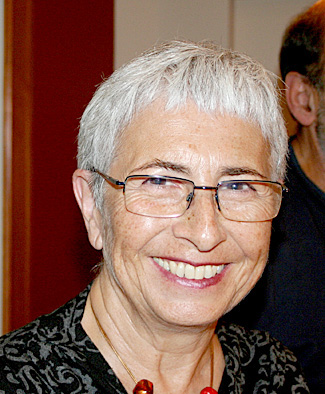
By MYRON LOVE Vivian Silver (oleh Hashalom) devoted her life to working toward dialogue and collaboration between Arabs and Jews in Israel. The culmination of her efforts was the Arab-Jewish Center for Empowerment, Equality, and Cooperation – Negev Institute for Strategies of Peace and Economic Development (AJEEC-NISPED), which she co-founded 25 year ago with her sister peace activist, Dr. Amal Elsana Ahl’jooj.
Tragically, Vivian was of the 1,200 Israeli Jews, Bedouin and foreign farm workers who were slaughtered during the Hamas-led pogrom of October 7, 2023.
Last month, AJEEC-NISPED announced plans to create the Vivian Silver Center for Shared Society in her memory – a new national hub for Jewish-Israeli Arab collaboration and social innovation in Be’er Sheva – backed by an initial $1 million donation from UJA-Federation of New York, along with support from the Meyerhoff Foundation, the Gilbert Foundation, and other philanthropic partners committed to strengthening shared society in Israel.
“It’s a great honor and a beautiful gesture,” comments Vivian’s son, Yonatan Zeigen, “and I hope it will be a central building for civil society, both in the physical sense, that it will become a substantial home for the organization and for other initiatives that will use the spaced and also symbolically, as a beacon for this kind of work in the specific location in the Negev.”
As this writer noted n an article earlier this year in relation to the announcement of the launch of the Vivian Silver Impact Award by the New Israel Fund (NIF) – of which she was a long time board member, and which was developed in conjunction with her sons, Yonatan and Chen), Vivian made aliyah in 1974. She first went to Israel in 1968 – to spend her second year at university abroad at the Hebrew University of Jerusalem, studying psychology and English literature.
In an article she wrote in 2018 in a publication called ”Women Wage Peace,” she related that during her final year at the University of Manitoba, she was among the founders of the Student Zionist Alliance on campus and was invited to its national conference in Montreal. There she met activists in the Habonim youth movement who planned on making aliyah and re-establishing Kibbutz Gezer. The day she wrote her last university exam, she boarded a flight to New York to join the group.
She spent three years in New York, where she became involved in Jewish and Zionist causes, including the launch of the Jewish feminist movement in America.
“It was a life-changing period,” she recalled. “I came to understood that in addition to being a kibbutz member, I was destined to be a social change and peace activist.”
Vivian and her group made aliyah in 1974 and settled on Kibbutz Gezer. In 1981, she established the Department Promoting Gender Equality in the Kibbutz Movement. She moved to Kibbutz Be’eri near the Gaza border in 1990, along with her late husband, Lewis, and their two sons
In 1998, Vivian became the executive director of the Negev Institute for Strategies of Peace and Development in Beer Sheva, an NGO promoting human sustainable development, shared society between Jews and Arabs, and peace in the Middle East. Soon after, she was joined by Amal Elsana Alh’jooj as co-directors of AJEEC-NISPED, winning the 2011 Victor J. Goldberg Peace Prize of the Institute for International Education.
In the article she wrote for “Women Waging Peace,” she noted that “while we later focused on empowerment projects in the Bedouin community in the Negev, initially we worked with Palestinian organizations on joint people-to-people projects. I spent much time in Gaza until the outbreak of the second intifada. We continued working with organizations in the West Bank. I personally know so many Palestinians who yearn for peace no less than we do.”
According to a report in the Israeli newspaper Arutz Sheva, in the November 24th edition, the Vivian Silver Centre – which is expected to open in the spring – will be located within AJEEC-NISPED’s soon-to-open AJEEC House, and will provide a permanent home for programs that promote equality, leadership, and cooperation among Israel’s diverse communities.
“The Vivian Silver Center for Shared Society, within AJEEC’s headquarters, “the Arutz Sheva report noted, “will serve as a regional platform for dozens of Israeli Arab and Jewish social organizations. Through AJEEC’s educational, vocational, and leadership programs, the center will support thousands of young adults each year – offering mentorship, professional training, and opportunities for cross-cultural collaboration.
“These programs,” the report continued, “already reach more than 15,000 participants nationwide, helping young people integrate into higher education and meaningful employment while narrowing social and economic gaps.”
AJEEC House is located in Be’er Sheva’s Science Park, near Ben-Gurion University. The three-storey AJEEC House has been designed to foster cooperation and dialogue. It will host community partnerships, provide shared workspaces for social entrepreneurs, and serve as a hub for initiatives addressing social and economic development across the Negev and beyond.
Readers who may be interested considering a donation can dial into NISPED’s website – – for further information.
Local News
Stanley Schwartz- it’s a long way from Waterloo

By GERRY POSNER For Stanley Schwartz, it all began on Waterloo Street. For those who remember the 1950s and 60s – take yourself back to the south end of Winnipeg. Waterloo between Corydon and Fleet had enough Jewish families to form its own High Holiday congregation. That is to say, there were a whole bunch of Jewish families there. Not quite McAdam Avenue in the north end – but close enough. One such family was that of Harold and Faye Schwartz, along with their children: Anita, Ruth, and Stanley.
Stanley graduated from Kelvin High School. In fact, he played football for the Kelvin Clipper. In addition, he was a participant in typical Jewish teen activities at the time, particularly AZA. He had a wide network of friends, some of whom remain vital connections to this day. Remember, in those days, there were no cell phones, no internet, and barely the beginnings of TV. So, as a teenage boy, Stanley spent a lot of time with his buddies.
Stanley went on to the University of Manitoba from where he graduated law in 1967. That was Stanley’s first step into a career that lasted close to 50 years. His second big step was his decision to forgo an offer to become a partner in a well known and established law firm in Winnipeg, and instead, go out on his own in a shared space arrangement. The shared space arrangement lasted several years and, during that time, he also opened up an office in Morris, Manitoba. Morris was once home to several Jewish families, but not when Stanley moved there to live.
Along his way to practicing law, Stanley got married – to the former Shirley Hooper, a woman originally from England who had moved to Vancouver and whom Stanley met by chance in Hawaii. They were blessed with two children and now have five grandkids. But the family did not end up in Winnipeg. In what was a huge life changing decision at that time, Stanley and Shirley boldly packed up their belongings and moved to Vancouver. Now, some of the thinking that entered into this move might well have been Shirley’s lack of fondness for the Manitoba winters (even though she had formed close relationships with many people in Winnipeg at that time – relationships she still maintainsto this day). But Stanley was also open to a fresh start in a new place. That decision, looking back on it now in 2025, was a wise one for both Stanley and Shirley Schwartz. For starters, who knew that Vancouver would explode with an immigrant population and with it, a dramatic increase in the value of property, caused in part by non-residents buying up land and buildings in Vancouver? Aside from that, Stanley had a specialty in his practice of law that was a perfect fit for Vancouver’s growing population- family law.
For the entirety of his legal career, Stanley focused on matrimonial law in every aspect, not the least of which was litigation. As a former lawyer myself, let me say that if there is an area of law filled with tension, aggravation, and sadness, it surely must be the field of marriage, children and custody battles, access, division of assets and all that goes with those issues. You often are not just a lawyer, but also a psychologist, father confessor and a lot more. You really have to be able to be able to watch some of the worst in humanity. And you have to be ready to, as they say, “ go for the jugular.”
You may never have to do it, but you have to be ready. Stanley Schwartz was ( nd remains so this day, in my view) on the face of it, not a likely candidate to be thought of as aggressive.That is because he was then and still is now, a friendly guy who does not seem to be one cut out for courtroom battles. But clearly, he was able to be “ rough and tough” when he had to be. When I asked Stanley what advice he would give to somebody wanting to employ him in a family law situation, he was quite frank. His immediate response to these kinds of clients was: “If you want a war, the winners will be two people -the two lawyers. The losers will be your children ( f there are kids in the picture.”)
Stanley might still have been at it, but he had medical issues relating to his back over a period of many years. He has had three spinal surgeries, and none of them has really worked satisfactorily. Standing for periods of time was hard for Stanley. He says he knew it was time to give up his practice of law when one day in court six or seven years ago, while he was in argument, he leaned against the dais and the judge told him that it was ok for him to sit down and argue. That episode confirmed what he had thought for a while: time to call it a day and a career. So with two metal rods in his back and pain in his legs, Stanley retired.
Though no longer involved in the legal world, Stanley has managed, very easily he would add, to settle into his non working life with as much travel as he and Shirley are able to do. That travel includes trips back to Winnipeg, also Winnipeg Beach – where he spent much of his youth. His visits also include time with his sister, Anita Ruth Neville, a name not exactly unknown to Manitobans given her role as the 26th Lieutenant Governor for the Province of Manitoba. And, with one daughter in Toronto, Shirley and Stanley also make regular stops in that city to see his family there.
Not that long ago, Stanley stepped into the world of octogenarians. He is quick to say that getting old is not for sissies, but at the same time, he is one to embrace what each phase of his life has brought.
Local News
Farah Perelmuter – a former Winnipegger in the spotlight
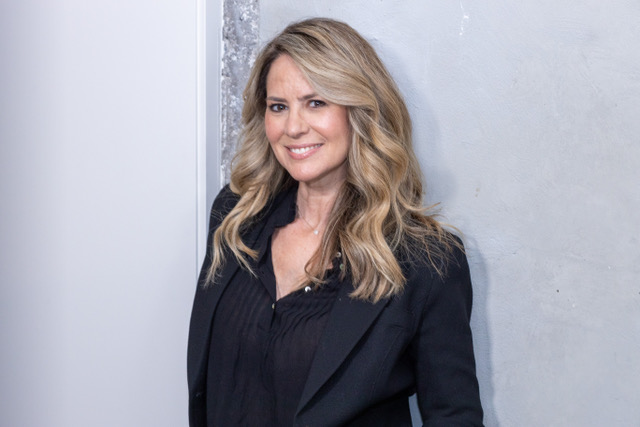
By GERRY POSNER From the north end of Winnipeg, Garden City to be exact, comes yet another Winnipeg woman who has almost singlehandedly built a prosperous business in Toronto – almost out of the blue. And who is this Winnipeg woman? None other than Farah Perelmuter, bornFarah Vinsky, the oldest of Toby and Irv Vinsky’s three daughters.
Farah attended Talmud Torah and Joseph Wolinsky Collegiate, also spent a year at the University of Winnipeg Collegiate. Upon graduation from high school, Farah took a gap year in Toronto working in the modelling industry. During that year, she had a chance to visit Western University in London, Ontario. That visit inspired her to apply there and, after one year at the University of Winnipeg, she was off to Western. Interestingly, not that long ago, Farah served on the Western Alumni Board – a role she filled for six years.
As a teenager in Winnipeg, Farah indicated that she had an entrepreneurial gene, as evidenced by her creating what was a “ self development “ program for teenage girls. When she started that program, Farah was all of 16 and was already working in her spare time in a modelling agency. When she came to Toronto after her graduation from university, she began working at a marketing agency, but the desire to be her own boss was so strong that, in 1995, Farah, along with her husband, Martin Perelmuter, started a business known as “ Speakers Spotlight.”
The business’s purpose was to bring prominent speakers to address audiences at locations all over the world. The couple initiated the business right from the spare bedroom in their apartment – with only one phone and one computer. Worse than that, Farah and her husband had no clients, no experience, no staff and, of course – no money. What they had was a clear vision. That vision was to put the right speaker in front of the right audience and, if they could do that, the impact would be significant and lasting. They also had so little business experience that they tried out different ways of doing things in their business and were not afraid to be innovative. That willingness to create and change likely propelled them speedily into the forefront in their field. As proof of their standing in the industry, Farah and Martin were selected twice as Entrepreneurs of the Year by Ernst and Young.
From that modest beginning emerged what is today called “ Speakers Spotlight,” a business that has grown into one of the world’s largest and indeed most respected speakers’ agencies. Farah and Martin have developed a team of people working for and with them (now up to 35 people, who work both in and out of the office) and, as well, they have created an incredible roster of extraordinary speakers. Their list of speakers includes people with deep experience in their respective fields. That combination of prominent speakers and a loyal, dedicated group of people putting the speakers on to platforms has allowed “Speakers Spotlight” to raise the bar of professional service and integrity within the industry. Would you believe 40,000 speaking engagements over 50 countries are now part of the history of a business that started in Farah’s spare bedroom? Just the list of names who have participated with Speakers Spotlight is staggering. Google Speakers Spotlight and I promise you will be overwhelmed, both by the quantity and quality.
Along the way, the company has received numerous awards and accolades. Most importantly, they have, through the various people that have been involved as speakers, helped to plant the seeds for people in the audience to make changes, alter plans and to inspire them to go forward. Sometimes, it’s as little as hearing the right person tell a story that can affect one person and from there, big things often develop. For Farah, that is what keeps her excited about her business.
In 2017, the couple started another business related to the first one, called “ The Spotlight Agency.” This company connects celebrity talent with opportunities all over the world. The talent comes from every area of life including the fields of entertainment, sports, food, decor and more. What the Spotlight Agency does is to unite these personalities to a brand of partnerships, with digital and creator content,TV, streaming, podcasts and publishing.
Even with the real success of Farah’s business ventures, what pushes her are her two children, Jade and Cole, both now in their 20s, and forging their own trails. As well, Farah appreciates from whence she came and she looks forward to what lies ahead. She treasures her return trips to Winnipeg to see her parents, relatives and indeed, old friends. So much is Farah Perelmuter a true Winnipgger that she still roots for the Winnipeg Jets, especially when they play the Toronto Maple Leafs. So, let the spotlight shine on Farah Vinsky Perelmuter.

